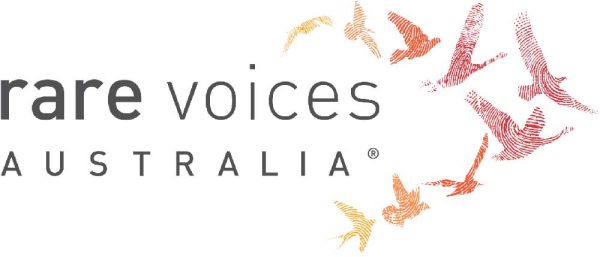DeSanto-Shinawi syndrome (DESSH)
Quick Search
- Summary
- Synonyms and Classifications
- Symptoms
- Disability Impacts
- Cause and Inheritance
- Diagnosis
- Treatment
- Clinical Care Team
- Clinical Care Guidelines
- Emergency Management
- Research
- Rare Disease Organisation(s)
- Lived Experience
- Support Services and Resources
- Mental Health
- Other Information
- Useful Links for Healthcare Professionals
Summary
DeSanto-Shinawi syndrome (DESSH), also known as WAC Syndrome, is a genetic condition caused by genetic changes (variants) in the WAC gene.1,2 Features that have been observed in DESSH individuals include developmental delay, some degree of intellectual disability, behavioural issues, and issues with vision.1-3 Babies may have low muscle tone (hypotonia), difficulties with feeding and constipation. Hearing loss, respiratory and kidney issues, seizures, certain facial features and inverted nipples have also been described in some individuals. It is important to note that these reported features may not be present in all DESSH individuals and may not all be specific to DESSH. There are currently no formal clinical diagnostic criteria established for DESSH.1
Synonyms and Classifications
Synonyms: WAC-related facial dysmorphism-developmental delay-behavioral abnormalities syndrome; WAC syndrome, WAC-related intellectual disability.1
Universal rare disease classifications provide a common language for recording, reporting and monitoring diseases. Please visit the Rare Disease Classifications page for more information about these internationally recognised classifications.
ORPHA:466943 WAC-related facial dysmorphism-developmental delay-behavioral abnormalities syndrome
There is no known ICD-11 classification.
Symptoms
Symptoms of DESSH may vary between individuals.
The following features have been reported in medical literature but are based on a low number of individuals.1,2 These observations may not be the case for every individual with DESSH and may not all be specific to DESSH.
- some degree of intellectual disability
- developmental delay involving speech and motor skills
- low muscle tone in babies (hypotonia)
- feeding difficulties in babies, as well as gastroesophageal reflux and/or constipation
- behavioural issues, including anxiety, attention-deficit/hyperactivity disorder (ADHD), aggression, sleep disturbances, and autism spectrum disorder (ASD)
- eye and vision issues, such as cortical visual impairment; eyes that do not align when looking at an object (strabismus), inability of eye to focus light (refractive errors) causing blurred vision
- respiratory problems such as abnormal breathing patterns, asthma, recurrent infections
- facial features, including square-shaped face, broad forehead, deep-set eyes, bushy eyebrows or unibrow (synophrys), broad chin and wide mouth (these features may not be specific enough and should not be used in diagnosis)
- seizures
- abnormalities such as shorter fingers or toes (brachydactyly), fleshy pads at the tips of their fingers (fetal finger pads) and flatfoot (planovalgus deformity of the feet)
- inverted nipples
More information about these reported features can be found at GeneReviews®: WAC-Related Intellectual Disability (Clinical characteristics).
Please speak to your medical team to learn more about the symptoms that have been associated with DESSH.
Disability Impacts
Rare diseases are often serious and progressive, exhibiting a high degree of symptom complexity, leading to significant disability. Majority of the estimated two million Australians living with a rare disease meet the Australian Government’s definition for disability (in accordance to the Australian Public Service Commission and Australian Bureau of Statistics), and many experience severe and permanent disability impacts. If you or someone you care for is experiencing disability-related impacts from a rare condition, please speak with a health or disability professional for advice. Information about relevant disability support can be found at the RARE Portal’s Disability Support Information page.
Cause and Inheritance
DESSH is a genetic condition. It is caused by disease-causing genetic changes (variants) in the WAC gene.3
All individuals have two copies (alleles) of the WAC gene – one on each chromosome that is inherited from each parent. DESSH is an autosomal dominant condition, which means that having a genetic variant in just one of the WAC gene copies can result in DESSH.2
For most individuals with DESSH, their genetic variant in WAC gene occurs randomly (de novo) prior to birth and is not passed down (inherited) from their parents.2
There is at least one presumed case of inherited DESSH through germline mosaicism1,2 – where a parent has the disease-causing genetic variants only in their germ cells (egg or sperm cells) that are passed on to the child in pregnancy; but is unaffected as their other cells do not contain the genetic variants. More information about germline mosaicism can be found at Centre for Genetics Education: Mosaicism.
If you would like to learn more about the inheritance and impact of this condition, please ask your doctor for a referral to a genetic counsellor. Genetic counsellors are qualified allied health professionals who can provide information and support regarding genetic conditions and testing. More information about genetic counselling can be found at:
- Information on Genetic Services
- The National and State Services pages underneath the ‘Genetic Counselling’ sections listed
Diagnosis
There are currently no formal clinical diagnostic criteria established for DESSH.1
Diagnosis of DESSH may be considered in individuals with intellectual disability along with other characteristic clinical features, and confirmed by genetic testing.1
A differential diagnosis can rule out other conditions with similar symptoms, such as Prader-Willi syndrome, Smith-Magenis syndrome, Pitt-Hopkins syndrome, Angelman syndrome and Koolen-deVries syndrome.1
Please speak to your medical team to learn more about the available diagnostic pathways for DESSH.
Treatment
There is currently no curative treatment for DESSH. Treatment is aimed at managing symptoms (symptomatic management) and involves a multidisciplinary care team. This may include physiotherapy and use of assistive equipment to help with mobility, occupational therapy, speech therapy, and use of augmentative and alternative communication (AAC) tools.1
It has been recommended that individuals with DESSH are monitored for, and referred to relevant specialists if necessary, for issues with their development, vision, hearing, feeding, breathing (respiratory), kidney, behaviour, and seizures.1 More information about these recommendations can be found at GeneReviews®: WAC-Related Intellectual Disability (Management).
Please speak to your medical team to learn more about the possible treatment or management options for your condition. Treatment will depend on an individual’s specific condition and symptoms. It is also important to stay connected to your medical team so that you can be made aware of any upcoming clinical trial opportunities.
Clinical Care Team
Clinical care for rare diseases often involves a multidisciplinary team of medical, care and support professionals. Please note that the information provided here is as a guide and that RVA does not necessarily monitor or endorse specific clinics or health experts.
Healthcare professionals involved in the treatment of DESSH may include general practitioners (GP), paediatricians, geneticists, gastroenterologists, neurologists, ophthalmologists, pulmonologists, nephrologists, physiotherapists, occupational therapists and speech therapists.1 The need for different healthcare professionals may change over a person’s lifetime and extend beyond those listed here.
Clinical Care Guidelines
We are not aware of any clinical care guidelines for DESSH in Australia. If you know of any relevant care guidelines, please let us know via the Contribute page.
Emergency Management
Individuals living with rare diseases may have complex medical issues and disabilities, which are not always visible. It is often useful to refer to their medical history as well as personal information such as a medical card, doctor’s letter, or if available, a rare disease passport, for relevant information.
Research
There are specific considerations around participating in rare disease research, including clinical trials. It is important to be mindful of issues such as data privacy, research ethics, consent and differences in research regulations between Australia and other countries.
If you are interested in finding clinical trials for your condition, please visit the following websites; however, there may not be any clinical trials available:
It is best to discuss your interest in any clinical trials with your medical team to determine suitability and eligibility.
Please note that RVA does not necessarily monitor or endorse each group/organisation’s operational governance and activities.
Rare Disease Organisation(s)
We are not aware of any rare disease organisations for DESSH in Australia. If you are aware of any Australian DESSH organisations, please let us know via the Contribute page.
International Organisation:
The DESSH Foundation (United States of America)
Website: https://www.dessh.org/
Please note that RVA does not monitor or endorse each group/organisation’s operational governance and activities. When engaging with a group, please consider the information on the RARE Portal’s Finding Helpful Peer and Community Supports page.
Lived Experience
DESSH vary between individuals, and each person’s experience is unique.
If you would like to share your personal story with RVA, please visit the Rare Voices Australia: Share Your Story page. RVA will consider your story for publishing on our website and inclusion on the RARE Portal.
Support Services and Resources
For information on available government and social services that provide support for individuals with a rare disease, please visit the National and State Services pages.
Mental Health
People living with a rare disease, including families and carers, often face unique challenges such as diagnostic delays, misdiagnoses, limited treatment options, and limited access to rare disease specialists and support. These challenges may impact people’s emotional wellbeing and quality of life. Many people find it helpful to seek mental health and wellbeing support to cope with ongoing stress and uncertainty. Connecting with people who have shared experiences through a support group may also be helpful. Information about relevant mental health and wellbeing support can be found at:
- Mental Health and Wellbeing Support for Australians Living with a Rare Disease
- The National and State Services pages underneath the ‘Mental Health’ sections listed
Other Information
Further information on DESSH can be found at:
Useful Links for Healthcare Professionals
- GeneReviews®: WAC-Related Intellectual Disability
- Online Mendelian Inheritance in Man, OMIM®: #616708 Desanto-Shinawi syndrome; DESSH
- Orphanet: WAC related facial dysmorphism developmental delay behavioral abnormalities syndrome
- Human Phenotype Ontology (HPO): WAC-related facial dysmorphism-developmental delay-behavioral abnormalities syndrome
References
- Varvagiannis V, de Vries BBA, Vissers LELM. WAC-Related Intellectual Disability. 2017. In: Adam MP, Mirzaa GM, Pagon RA, et al., eds. Gene Reviews® [internet]. Seattle, University of Washington; 1993-. Accessed 20 September 2023. https://www.ncbi.nlm.nih.gov/books/NBK465012/
- Online Mendelian Inheritance in Man, OMIM®. Johns Hopkins University, Baltimore, MD. #616708 – Desanto-Shinawi Syndrome; DESSH. Accessed 20 September 2023. https://omim.org/entry/616708
- DeSanto C, D’Aco K, Araujo GC, Shannon N, DDD Study, Vernon H, et al. WAC loss-of-function mutations cause a recognisable syndrome characterised by dysmorphic features, developmental delay and hypotonia and recapitulate 10p11.23 microdeletion syndrome. J Med Genet. 2015;52(11):754-61. https://doi.org/10.1136/jmedgenet-2015-103069
Contributors
This page has been developed by Rare Voices Australia (RVA)’s RARE Portal team.
If you are aware of any additional information that may benefit stakeholders with an interest in this page, or if you notice any broken links or inaccurate information, please let us know via the Contribute page.

